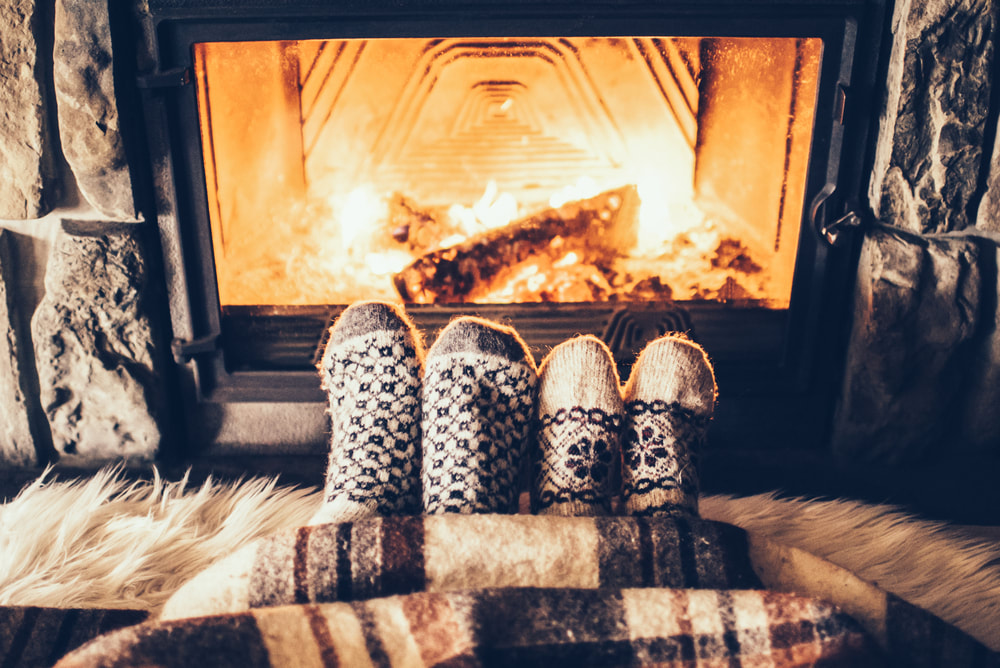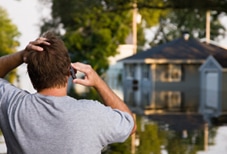|
You’ve spent three months looking over paint swatches and now you’re finally ready to make a decision. But as soon as you finish the first coat of Blue Marlin, you’re wishing you had gone with Iceberg instead.
Paint is pretty easy to change. But other home updates can cost you more than just a lost weekend. Take a look at these common remodeling mistakes before you start your next project: 1. You Underestimate the Timeframe It was supposed to take one afternoon to install the new plank-style wood flooring in your bedroom. Now you’re sleeping in the living room and your project is far from complete. The Takeaway: Be realistic from the beginning and allow yourself plenty of time to deal with unforeseen challenges. 2. You Cut Corners on Materials You’re heartbroken to learn that the 99-cent backsplash you found is hard to install and not very durable. It didn’t take long to crack one of the tiles. The Takeaway: Keep quality in mind, read consumer reviews and don’t let thriftiness cloud your vision. 3. You Should Have Hired a Professional Building a new set of front entrance stairs seems manageable according to the YouTube videos you’ve watched. But before you know it, you’re in way over your head. The Takeaway: When a project involves heavy lifting or specific skills, it’s best to turn to a pro for help. 4. You End Up Going Way Over Budget You just wanted to pull out some old carpet in the basement and add a simple wall. Now, you’re waterproofing and managing mold (and you surpassed your budget several days ago). The Takeaway: A thorough inspection from a trusted contractor can reveal the true scope of the work that needs to be done. Have questions about your homeowners coverage or how it might change if you remodel? Reach out today.
0 Comments
 A crackling blaze brightens any dreary winter day. But if a fireplace or a wood-burning stove is not cared for properly, it can expel excessive smoke containing toxins such as combustible tar (creosote) and carbon monoxide, as well as carcinogens like formaldehyde. That ’s why kids who are regularly exposed to wood smoke are more likely to have a chronic cough, wheezing, and asthma, says Parents advisor Philip J. Landrigan, M.D., coauthor of the new book Children & Environmental Toxins. The risk for lung cancer later in life may increase too. But don’t swear off fireplaces for good! You can still enjoy yours safely with this advice. 1. Air out your house. This is an easy way to eliminate indoor air pollution and improve air quality. Regular use of a fireplace or woodstove may dry the air in a home, resulting in stale air and dust. Once a week, on a bright, clear day with light wind, open all the blinds and windows and let the air blow through your house for an hour or two. Make this a year-round habit—even during the warmer months when you’re not using the fireplace—to detox your space of other common pollutants produced by cleaning products, candles, and cooking. 2. Watch that ash pile.It’s fine to have 2 or 3 inches of ash on the firebox floor, but any more than that may push the logs forward and cause fire, sparks, or smoke to billow out into the room. Even when you’re not using the fireplace, having too much ash can also trap moisture and create a damp, attractive home for insects. Use a shovel to remove ash, and either toss it into a noncombustible garbage can with a sealable lid or throw it into your compost pile. (Fun fact: Ash makes great fertilizer—especially for rose bushes!) 3. Burn the right stuff. To help reduce built-up soot, ash, and creosote, use only dry, well-seasoned firewood. Steer clear of green or wet wood, which can cause too much smoke, excessive creosote, and dangerous chimney fires. If you split your own firewood (go you!), cover the top of the pile and store it in a dry spot for at least nine months before burning. While it’s tempting to use your fireplace as a makeshift disposal, resist the urge: When burned, wrapping paper and plastic release chemicals that harm us and our planet. The same goes for cardboard and that Christmas tree you’re finally ready to part with: Both are highly combustible and greatly increase your risk of a chimney or house fire. Take them outside and to the curb. 4. Manage your carbon monoxide. Fires in a wood stove or a fireplace can give off deadly carbon monoxide. In well insulated homes, cracking open a window when you light a fire can help. Make sure a fire is out before closing the damper, leaving the house, or going to bed (though it’s okay to walk away from an ember or two). Avoid dousing flames with water, which may fill your room with smoke or damage your fireplace. Also, make a point of checking the batteries in your carbon monoxide detectors twice a year when you change your clocks, so you’re less likely to forget. 5. Get a yearly fireplace inspection.Any fireplace or stove, regardless of its fuel source, needs a yearly inspection and cleaning if it has a chimney or a vent. A certified chimney sweep will check for nests or other blockages you can’t see and evaluate the condition of the chimney and appliance. If you have a wood-burning fireplace, the chimney sweep can remove any flammable tar and creosote that tend to collect on chimney walls after frequent use. Visit Chimney Safety Institute of America to find a certified chimney sweep near you and for more info on the level of inspection you need depending on the type of fireplace you own. Do you wish you had more control over certain things, including your auto insurance premium?
It’s true that many factors can’t be changed, like your age or how many years of driving experience you have. But with a little effort, you might be able to influence other factors (and potentially lower your premium). Here are four steps you can take that might help you save a little money on your policy. 1. Follow the Rules of the Road Even a minor traffic violation can increase your premium. It’s crucial to buckle up, slow down, keep your eyes off your phone, and when possible, avoid the path of dangerous and distracted drivers. Parking in safe areas is helpful, too. 2. Make Smart Financial Choices It may surprise you, but your credit score can often have an impact on your premium. A higher score may predict less future risk, so try to stay out of debt and avoid making late payments. 3. Don’t Claim the Small Stuff A long history of insurance claims or gaps in coverage are red flags that typically cost you. Consider taking care of small claims on your own (especially when the repair costs are lower than your deductible) and maintain continuous coverage. 4. Check In Annually It pays to review your coverage every year or after a significant life event. We can look at possible bundling options and discounts for factors like safe driving. Need to check in? Have questions about how to reduce your costs? Reach out anytime Transportation is now the largest source of carbon emissions in the United States. In many U.S. cities and towns, the personal automobile is the single greatest polluter because emissions from millions of vehicles on the road add up. To reduce greenhouse gas emissions, individuals can use cleaner modes of transportation to get around, from public transit to biking and walking.
DrivingModern transportation relies heavily on petroleum, and passenger cars and light-duty trucks (i.e. sport vehicles, pickup trucks and minivans) contribute half of the carbon dioxide emissions from the U.S. transportation sector. Burning one gallon of gasoline creates about 20 pounds of CO2—which means the average vehicle creates roughly 6 to 9 tons of CO2 each year. It turns out that we can do a lot to reduce the impacts of driving, starting with the type of car we drive. Over the average lifetime of an American car, a 30-mpg car will save roughly $3,000 in fuel costs compared with a 20-mpg car. When buying your next car, pick the least-polluting, most efficient vehicle that meets your needs. Just switching from a vehicle that gets 20-mpg to a vehicle that gets 25-mpg car reduces your greenhouse gas emissions by 1.7 tons annually. Check out the Environmental Protection Agency’s Green Vehicle Guide and the Department of Energy’s Fuel Economy website and Model Year 2017 guide for information about the emissions and fuel economy performance of different vehicles. Electric vehiclesElectric vehicles (EVs) offer a low-carbon alternative to gasoline-powered vehicles. Both the private and the public sectors are working to reduce barriers and expand EV sales worldwide. Automakers are competing to reduce battery costs (which make up most of an EV’s additional cost), increase battery range, and offer a wider range of affordable EV styles, including SUVs and minivans. EV adoption varies by country, region, and city, but innovative public policies are encouraging people to purchase the vehicles. For example, California allows EV drivers to use HOV lanes even if they are driving alone. In Portland, Oregon, an extensive public charging network may have helped spur all-electric vehicles sales to three times the average U.S. all-electric vehicle uptake rate. An EV can reduce your carbon footprint and save you money over the lifetime of the vehicle. Some EV questions to consider:
Eco-driving Optimal driving techniques can also help you cut emissions and save money in a gasoline-powered car. Hard acceleration and braking can waste fuel and lower your mileage by 33 percent on the highway and 5 percent around town, according to the Department of Energy (DOE). DOE studies show that for every 5 miles per hour you drive over 60 miles per hour, fuel economy is lowered by 7 percent, so go easy on the brakes and gas pedal. You can also lower impacts by reducing time spent idling, and using overdrive and cruise control. And because a properly-maintained vehicle can improve your gas mileage and fuel economy by 4 percent, remember to have your vehicle tuned up, tires inflated, and oil and air filter cleaned out regularly.  Winter is known for being a time of celebration, family gatherings and staying cozy by the nearest fireplace. It’s also a season of potential challenges when it comes to your home, vehicle and health. Want to keep the season as festive and problem-free as possible? Here are a few tips to help you enjoy the rest of 2019 and beyond: At Home It’s good advice for any time of the year: Give your home a thorough once-over and complete the maintenance tasks that can prevent you from having to make expensive repairs later on. This includes:
Winterize your car by checking all its vitals:
Health and Safety Last but not least, take good care of your family and yourself during cold and flu season by getting a flu shot, washing your hands often and regularly wiping down commonly used items like light switches and remote controls. And whether you’re getting your home ready for colder weather or the upcoming holidays, always exercise caution when using ladders, power tools, fireplaces and candles. Want more tips before the upcoming new year? Need to discuss your coverage? Reach out anytime. |
better Insurance
|
-
HOME
- Send me a Home Insurance Quote >
- FLOOD Insurance, Massachusetts >
- Cape Cod Home Insurance
- Pay Your Home Insurance Bill Online
- Ordinance or Law Coverage
- How to Prevent a Claim on your Home Insurance Policy
- Videos - Cape Cod Real Estate Tips >
- Cape Cod Massachusetts Arbella Insurance Discounts
- Cape Cod Massachusetts Lloyds of London Home Insurance
- Safety Insurance Discounts for Cape Cod, Massachusetts
- MPIUA - MA Property Insurance Underwriting Association "Fair Plan"
- Cape Cod Massachusetts Home Protection Insurance
- Hurricane Preparedness >
-
AUTO
- Send me an Auto Insurance Quote for Cape Cod, Massachusetts
- BOAT Insurance >
- Cape Cod, MA Dept. of Motor Vehicles
- Cape Cod Massachusetts - Report an Auto Insurance Claim
- Auto Insurance Quote - CAR BUYING TIPS : Auto Insurance for Cape Cod, MA
- InControl Driver Training
- Car Insurance for Cape Cod Massachusetts - Arbella Insurance - Send me an Auto Quote >
- Plymouth Rock - Send me an Auto Quote >
- Encompass Insurance Discounts
- Safety Insurance - Send me an Auto Quote >
- Travelers Insurance Discounts
- Progressive Insurance - Send me an Auto Quote
- LIFE
- OFFICES
- ABOUT US
- Stay Home
- Home Insurance Explained
- Agent Login
- Privacy Policy
- Videos - Cape Cod Real Estate Investing, Taxes & Insurance
- Videos - Cape Cod Coastal Real Estate
- Português
Arthur D. Calfee Insurance Agency, Inc. is a friendly local insurance agency proudly offering Massachusetts, Cape Cod and the Islands. A-Excellent AM Best rating, A+ Excellent by the BBB
Using innovative thinking, cutting-edge tools and expert resources at national and local levels, we deliver the best possible outcome on every policy we manage. Need Home Insurance? Easy, Fast, & Secure Home Insurance. Get Free Quotes 100% Online Now! Available 24/7. Affordable Rates. Cover Your Biggest Investments. Get a homeowners insurance quote, find coverage options. We'll help you understand and customize the right home insurance coverage for you.
Home is where your heart is—along with a healthy chunk of your net worth. Get started today with a free homeowner's quote.
Compare home insurance quotes today and save on protection for your biggest investment. Build a Custom Policy & Make the Switch! Our local underwriting professionals focus exclusively on finding the best home insurance, homeowner's insurance, hazard insurance, investment property insurance, flood insurance, flood zone information, vacation home insurance, second home insurance, auto insurance, collector car insurance, business insurance, general liability insurance, property insurance, professional liability insurance, contractor's liability insurance, worker's comp insurance, key man insurance, whole life insurance, term life insurance, group or personal disability, & long-term care insurance policies to patrons in the following Cape Cod, Massachusetts towns, communities and villages: Barnstable, Bourne, Pocasset, Brewster, Buzzards Bay, Centerville, Chatham, Cotuit, Craigville, Dennis, East Dennis, Eastham, Falmouth, East Falmouth, Hatchville, West Falmouth, North Falmouth, Woods Hole, Harwich, Hyannis, Hyannisport, Martha's Vineyard, Nantucket, Marstons Mills, Mashpee, Orleans, Osterville, Provincetown, Sandwich, Sagamore, Sagamore Beach, Truro, Wellfleet, Yarmouth, and Yarmouthport. Real-Time Pricing. Insurance coverage: Wind Damage, Fire Loss, Water Damage. Protect your home and belongings. Low Rates For Your Best Options to Save Money On Great Coverage! Get a quote today. Home insurance helps protect your house and your family.
Using innovative thinking, cutting-edge tools and expert resources at national and local levels, we deliver the best possible outcome on every policy we manage. Need Home Insurance? Easy, Fast, & Secure Home Insurance. Get Free Quotes 100% Online Now! Available 24/7. Affordable Rates. Cover Your Biggest Investments. Get a homeowners insurance quote, find coverage options. We'll help you understand and customize the right home insurance coverage for you.
Home is where your heart is—along with a healthy chunk of your net worth. Get started today with a free homeowner's quote.
Compare home insurance quotes today and save on protection for your biggest investment. Build a Custom Policy & Make the Switch! Our local underwriting professionals focus exclusively on finding the best home insurance, homeowner's insurance, hazard insurance, investment property insurance, flood insurance, flood zone information, vacation home insurance, second home insurance, auto insurance, collector car insurance, business insurance, general liability insurance, property insurance, professional liability insurance, contractor's liability insurance, worker's comp insurance, key man insurance, whole life insurance, term life insurance, group or personal disability, & long-term care insurance policies to patrons in the following Cape Cod, Massachusetts towns, communities and villages: Barnstable, Bourne, Pocasset, Brewster, Buzzards Bay, Centerville, Chatham, Cotuit, Craigville, Dennis, East Dennis, Eastham, Falmouth, East Falmouth, Hatchville, West Falmouth, North Falmouth, Woods Hole, Harwich, Hyannis, Hyannisport, Martha's Vineyard, Nantucket, Marstons Mills, Mashpee, Orleans, Osterville, Provincetown, Sandwich, Sagamore, Sagamore Beach, Truro, Wellfleet, Yarmouth, and Yarmouthport. Real-Time Pricing. Insurance coverage: Wind Damage, Fire Loss, Water Damage. Protect your home and belongings. Low Rates For Your Best Options to Save Money On Great Coverage! Get a quote today. Home insurance helps protect your house and your family.
Testimonials & Endorsements for the Best Insurance Agent on Cape Cod, MA
PHONE: (800) 479-2601 CUSTOMER SUPPORT & SERVICE
Please note: The above is meant as general information to help you understand the different aspects of insurance. This information is not an insurance policy, does not refer to any specific insurance policy, and does not modify any provisions, limitations, or exclusions expressly stated in any insurance policy. Descriptions of all coverages and other features on this page are necessarily brief; in order to fully understand the coverages and other features of a specific insurance policy, we encourage you to read the applicable policy and/or speak to an insurance representative. Coverages and other features vary between insurers, vary by state, and are not available in all states. Whether an accident or other loss is covered is subject to the terms and conditions of the actual insurance policy or policies involved in the claim. References to average or typical premiums, amounts of losses, deductibles, costs of coverages/repair, etc., are illustrative and may not apply to your situation. We are not responsible for the content of any third-party sites linked from this page.
© 2023 Copyright, Arthur D. Calfee Insurance Agency, Inc.
Calfee Cares.® Privacy Policy
Calfee Cares.® Privacy Policy









 RSS Feed
RSS Feed











